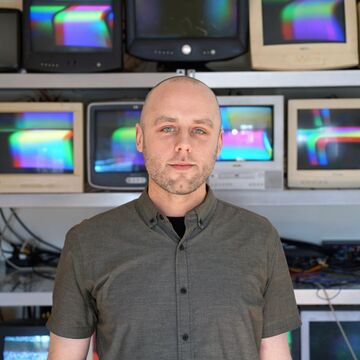| Media Practices: The Moving Image |
Film, Video, New Media, and Animation |
2000 (001) |
Spring 2024 |
|
Description
This course is designed to introduce students to the language and histories of the moving image arts and the diverse ways in which artists have contributed to them. Throughout the semester we will examine a range of approaches to creating moving image work. We will compare and contrast established ?norms? with radical and experimental approaches to these various media, leading to an understanding of the rich, complex, and evolving landscape upon which individuals have been making, and continue to make, moving image art. Students will engage with this expanded field through lectures, readings, screenings, meetings with visiting artists as well as becoming active in discussions and practitioners in the field via group projects. Working in small groups, students will complete a series of short projects to introduce them to the various pathways of the department. By the end of the semester, students should have gain basic production and postproduction skills as well a good understanding of the key concepts relevant to contemporary film, video, new media, installation and animation.
|
Class Number
1208
Credits
3
|
| Media Practices: The Moving Image |
Film, Video, New Media, and Animation |
2000 (001) |
Fall 2024 |
|
Description
This course is designed to introduce students to the language and histories of the moving image arts and the diverse ways in which artists have contributed to them. Throughout the semester we will examine a range of approaches to creating moving image work. We will compare and contrast established ?norms? with radical and experimental approaches to these various media, leading to an understanding of the rich, complex, and evolving landscape upon which individuals have been making, and continue to make, moving image art. Students will engage with this expanded field through lectures, readings, screenings, meetings with visiting artists as well as becoming active in discussions and practitioners in the field via group projects. Working in small groups, students will complete a series of short projects to introduce them to the various pathways of the department. By the end of the semester, students should have gain basic production and postproduction skills as well a good understanding of the key concepts relevant to contemporary film, video, new media, installation and animation.
|
Class Number
1570
Credits
3
|
| Media Art Histories and Genealogies |
Art History, Theory, and Criticism |
2513 (001) |
Spring 2024 |
|
Description
An introduction presents an overview of the academic field known as Media Art Histories as well as the specific genealogies of relevant academic disciplines (i.e. of Film Art, Video Art, New Media Art & both filmic and digital Experimental Animation) as well as genealogies of specific media technologies (i.e. cameras, computers and software; electric lights, radio and sound; chemical, magnetic, and digital forms of storage and the industrial and capitalized structures that they require). These interwoven histories of shared theory/practices are investigated in relationship to independent/experimental/art media in contemporary cultures by asking: How do artists develop methods to work with, against, and around these techno-social forms? Readings will include Kittler, Zelenski, Grau, Gunning, Gaudreault, Musser, Schivelbusch, Auge, Adorno, Kluge, and Krackauer.
|
Class Number
2236
Credits
3
|
| Realtime |
Film, Video, New Media, and Animation |
3812 (001) |
Fall 2024 |
|
Description
Realtime explores audio-visual systems and performances of live experimental new media art. Artists create, code, control, and transform digital and analog media in realtime using systems created by and for artists. Students learn, play and perform with artware, open source tools and systems, and commercially available software. This studio course includes a historical, media archaeological approach to realtime systems, using the Sandin Image Processor?an analog patch programmable computer optimized for video processing from 1971-1973?to introduce improvisational audio/video exploration and critical concepts related to contemporary user interface design. Current praxis is discussed through lectures, screenings, and visiting artists in relation to the earlier realtime forms from early cinema (such as Oskar Fischinger?s Lumigraph), video (such as Steina Vasulka?s Violin Power), new media (such as JODI?s Prepared Desktop), and the internet (such as Wafaa Bilal?s Domestic Tension). Emphasis is placed on the conceptual and technical development of independently driven projects and the completion of professional exhibition proposals for realtime work.
|
Class Number
1585
Credits
3
|

